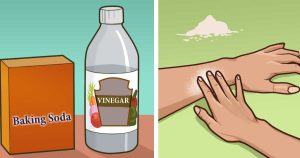Bees produce some of the sweetest stuff around. Though we may love their honey, bees can be some of the most irritating and painful insects. When a honey bee stings, it is doing so to protect its hive. This is why a lone bee pollinating a flower or searching for nectar will typically leave you alone. However, if you do happen to be the victim of a bee sting, , you will likely experience the mild symptoms of sharp, burning pain and a red welt at the site of the sting, as well as swelling around the wound.
Only a small percentage of the U.S. population (five per cent according to the Asthma and Allergy Foundation of America) is actually allergic to bees. More often, people think they are allergic because their panic triggers new symptoms similar to those of a severe allergic reaction, such as difficulty breathing and a rapid pulse. If you are not allergic to bees, the first thing you should do after being stung is remove the stinger and clean the wound. Next, follow one or more of the following home remedies to relieve the pain and heal the sting.

1. Honey:
Who knows a bee sting better than honey? Dabbing honey on the wound and then covering it with gauze for 30 to 60 minutes.
2. Garlic:
Garlic is an excellent healer. Press a crushed clove or two against the wound. Cover with a moist towel and relax for 20 to 30 minutes.
3. Rhubarb:
Rhubarb not only tastes good, but its juices are also effective at relieving the pain from a bee sting, according to beekeeper Claire Goodall . To use this home remedy, break the stem of fresh rhubarb and apply the juice directly to the site of the sting.
4. Parsley:
LIRE LA SUITE..